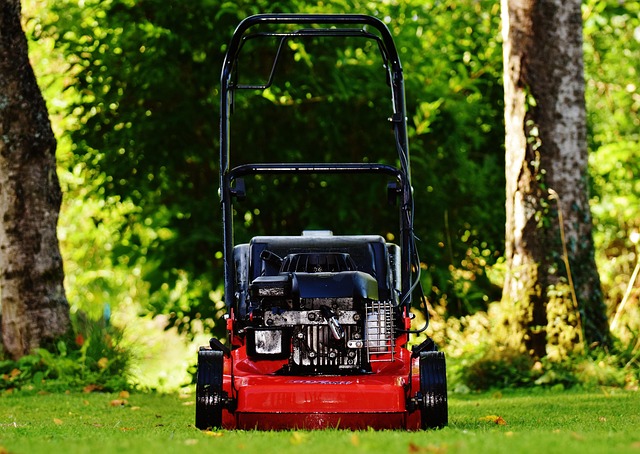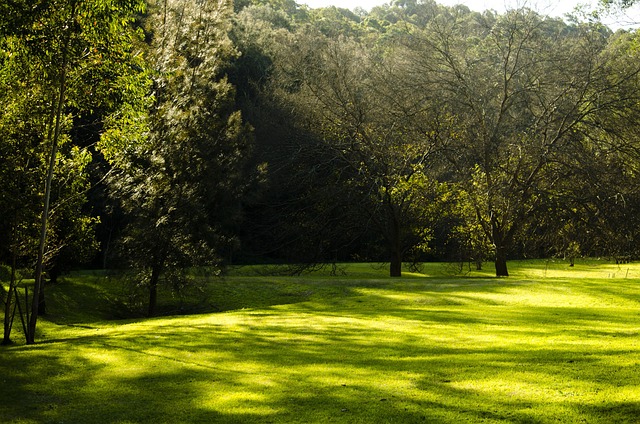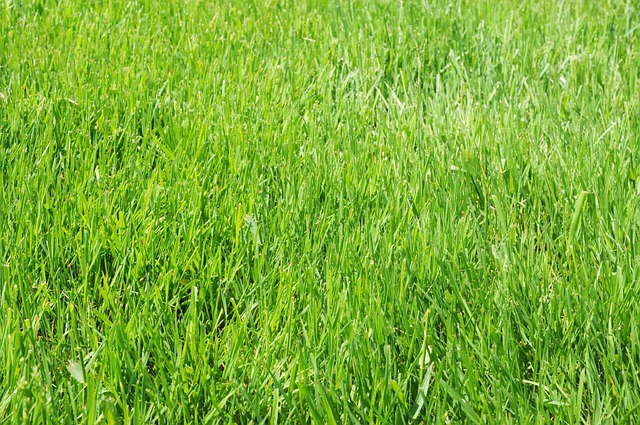Mulching is a Lawn Care and Landscaping strategy that offers numerous advantages, including moisture retention, weed suppression, and temperature regulation. The ideal type of mulch (organic or inorganic) should be selected according to specific requirements, with a uniform layer (2-4 inches thick) applied around the lawn, avoiding tree trunks to prevent rot. Regular maintenance ensures continued benefits for a lush, healthy lawn.
Transform your lawn into a picture-perfect landscape with the art of mulching and edging. This comprehensive guide explores the essential practices for achieving a polished, well-maintained outdoor space. From understanding the benefits of mulching—boosting soil health and suppressing weeds—to mastering various edging techniques, you’ll learn how to create clean lines and define garden borders. Additionally, discover the secrets to selecting the right mulch types, maintaining edges, and ensuring your lawn stays pristine all year round. Elevate your lawn care game with these expert tips for optimal Lawn Care and Landscaping.
- Understanding Mulching: Benefits and Best Practices
- – What is mulching and why is it important for lawn care?
- – Types of mulch: organic vs. inorganic
Understanding Mulching: Benefits and Best Practices

Mulching is a crucial aspect of effective lawn care and landscaping, offering numerous benefits for your outdoor space. By adding organic or inorganic material to the top layer of soil, mulching helps retain moisture, suppress weeds, and regulate soil temperature. This practice is particularly valuable in maintaining a healthy, vibrant lawn, as it allows for better nutrient distribution and promotes root growth.
When implementing mulching practices, it’s essential to choose the right type for your lawn. Organic mulches, such as wood chips or straw, are excellent for enhancing soil fertility and creating a natural look. Inorganic options, like stones or rubber, provide a more structured border and are ideal for controlling weeds in specific areas. Proper application involves spreading an even layer, usually 2-4 inches thick, around the lawn’s perimeter, avoiding direct contact with tree trunks to prevent rot. Regular maintenance, including replenishing worn-out mulch, ensures continued benefits for your lawn care and landscaping efforts.
– What is mulching and why is it important for lawn care?

Mulching is a vital practice in lawn care and landscaping, offering numerous benefits that contribute to a lush and healthy green space. It involves applying organic or inorganic material, known as mulch, onto the surface of the soil around plants and trees. This process serves multiple purposes, all of which are essential for maintaining an attractive and sustainable lawn.
One of the primary advantages is retaining moisture in the soil. By creating a protective layer, mulch reduces evaporation, ensuring that roots receive adequate water. This is especially beneficial during hot summers or dry spells, promoting robust plant growth. Moreover, it suppresses weeds effectively, preventing their seeds from receiving sunlight and germinating. In lawn care, this is crucial as it reduces competition for nutrients and allows the desired grass species to flourish.
– Types of mulch: organic vs. inorganic

When it comes to lawn care and landscaping, mulching and edging play a crucial role in maintaining a healthy, visually appealing yard. A key distinction lies in the choice between organic and inorganic mulch. Organic mulch, such as wood chips, straw, or compost, offers numerous benefits for lawn and garden health. It enriches the soil with essential nutrients over time, improves water retention, and supports biodiversity by providing a habitat for beneficial insects and microorganisms.
In contrast, inorganic mulch like rock, gravel, or rubber is non-biodegradable and doesn’t break down to nourish the soil. While it requires less maintenance and doesn’t attract pests, it lacks the nutritional value of organic mulch. Inorganic options are ideal for areas needing ground cover without the need for nutrient-rich soil, such as around trees or in pathways, adding a decorative touch to landscaping efforts.
Mulching and edging are essential practices in lawn care and landscaping, offering numerous benefits such as weed suppression, moisture retention, and improved soil health. By understanding the types of mulch and best practices, you can enhance your lawn’s aesthetics and overall well-being. Incorporating these techniques into your routine maintenance will contribute to a lush, vibrant lawn that stands out in the neighborhood.



